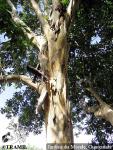1 GERMOSEN-ROBINEAU L, GERONIMO M, AMPARO C, 1984 Encuesta TRAMIL. enda-caribe, Santo Domingo, Rep. Dominicana.
2 DUKE JA, 1988 Handbook of medicinal herbs. Boca Raton, USA: CRC.
3 KIUCHI F, HIOKI M, NAKAMURA N, MIYASHITA N, TSUDA Y, KONDO K, 1989 Screening of crude drugs used in Sri Lanka for nematocidal activity on the larva of Toxocaria canis. Shoyakugaku Zasshi 43(4):228-293.
4 TUCKER A, MACIARELLO M, LETRUM L, 1991 Volatile leaf oils of Caribbean Myrtaceae. II.Pimenta dioica (L.) Merr. of Jamaica. J Essent Oil Res 3(3):195-196.
5 HERRERA J, 1988 Determinación de actividades biológicas de vegetales utilizados en medicina tradicional. Informe TRAMIL. Dep. de Farmacología, Facultad de Salud, Universidad del Valle, Cali, Colombia.
6 HERRERA J, 1992 Determinación de parámetros farmacológicos usados en medicina tradicional popular en la Cuenca del Caribe. Informe TRAMIL. Dep. de Farmacología, Facultad de Salud, Universidad del Valle, Cali, Colombia.
7 PILOTO FERRER J, VIZOSO A, RAMOS A, GARCIA A, REMIGIO A, VEGA Y, GONZALEZ ML, RODRIGUEZ C, CARBALLO C, 2009 Plantas medicinales. Diez años de evaluaciones toxicogenéticas en el CIDEM. Boletín Latinoamericano y del Caribe de Plantas Medicinales y Aromáticas, 8(5):428-434.












